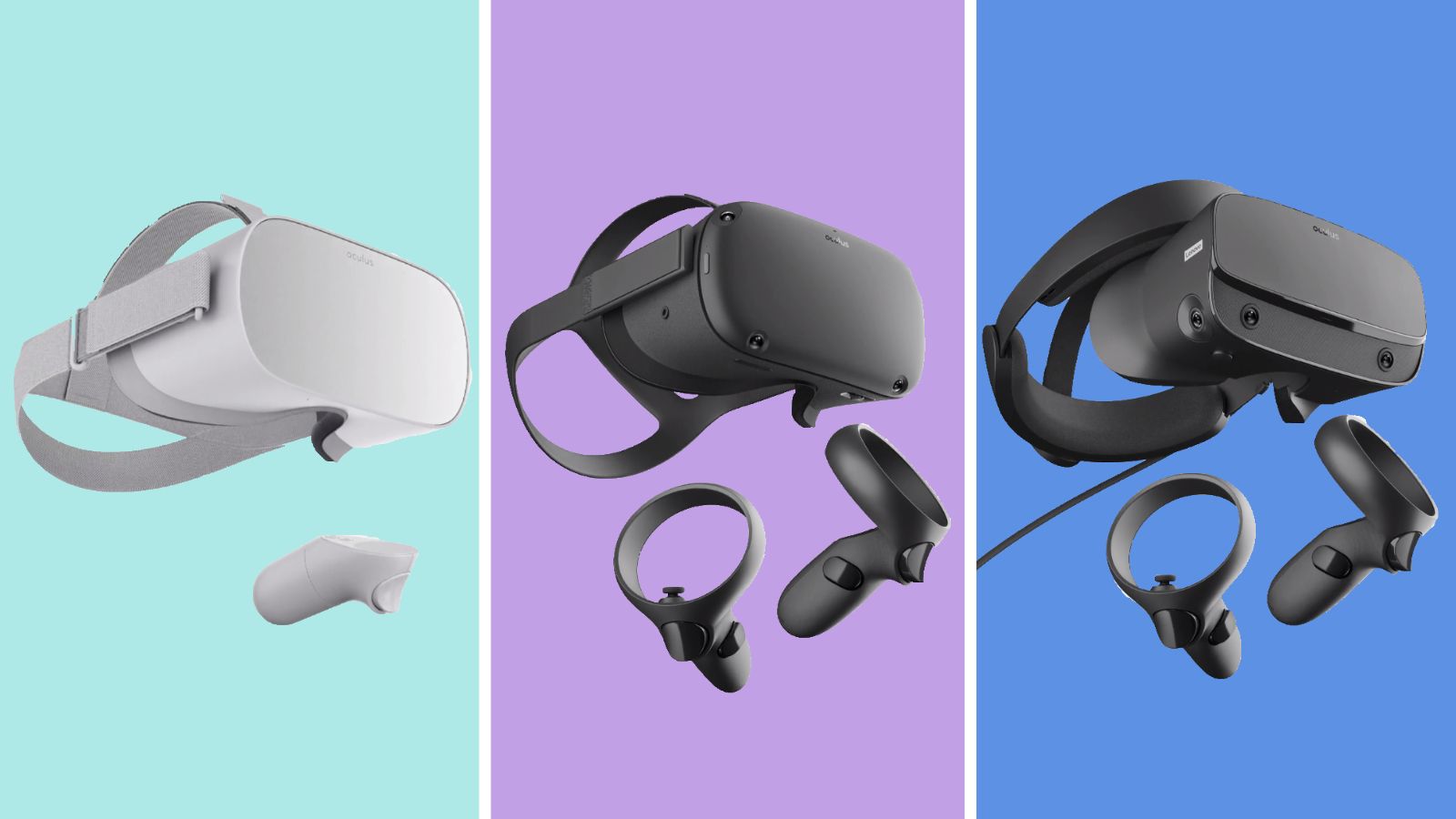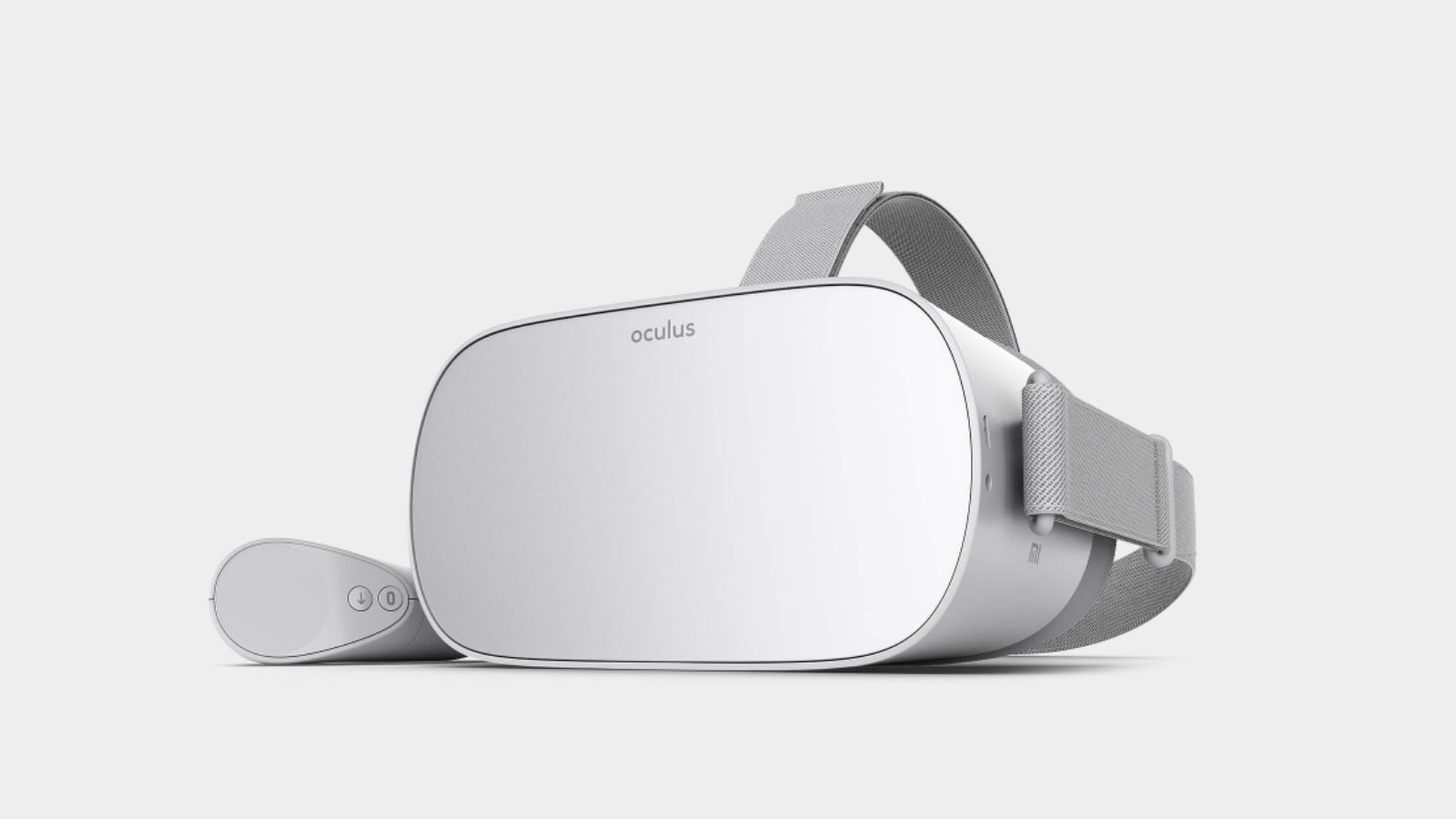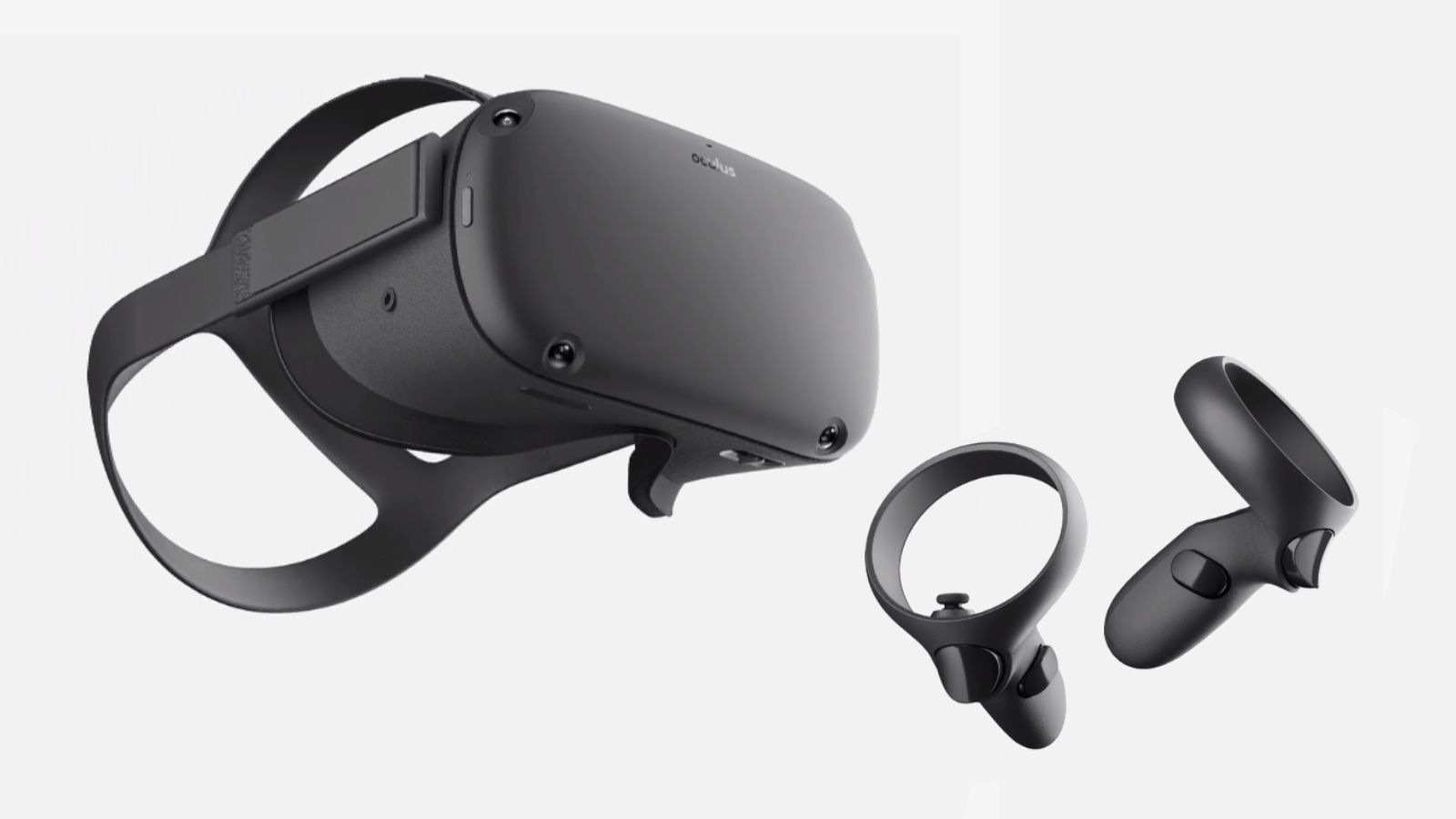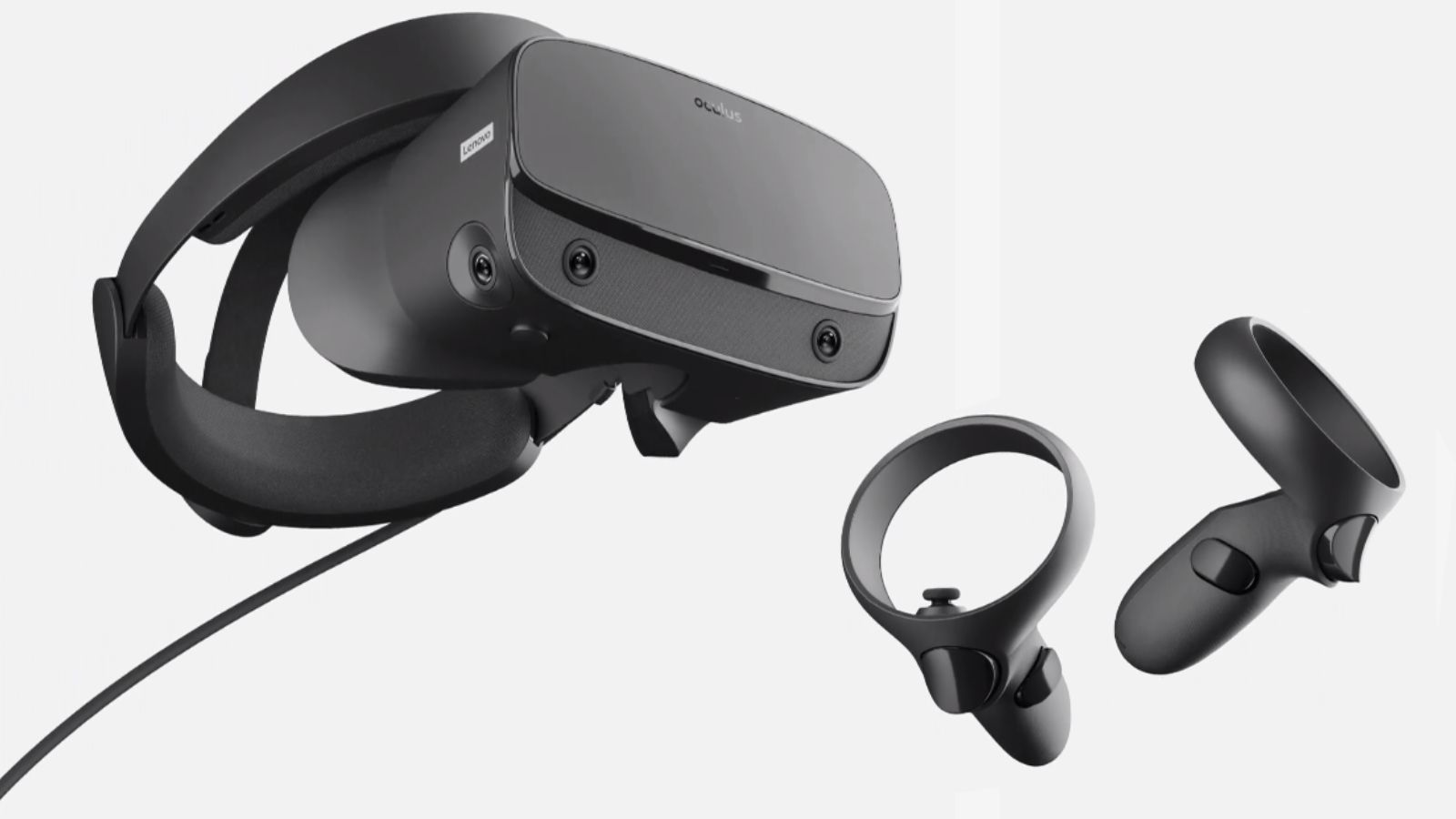Quick Links
VR has grown a lot in the past few years and, despite multiple competitors popping up, Oculus has managed to stick around as the most well-known VR company---it's the brand many turn to when entering this world. But even if you've already decided to buy from Oculus, you've still got some choices to make.
Namely, choosing between Oculus' three headsets: Oculus Go (starting at $149), Oculus Quest (starting at $399), and Oculus Rift S ($399). They're all quality products---but which one is right for you? We've stacked these three headsets against each other to compare their features, abilities, and overall user experience so that way when it's finally time to bite the bullet, you'll be making the best decision for you.
Without further ado, let's get into it.
Oculus Go: Simple and (More) Budget Friendly
Starting with the cheapest option, the Oculus Go is a standalone VR headset with a single controller. Both room- and hand-tracking were sacrificed to achieve the Go's low price, meaning you can't play the many high-end VR games that require them. Without any room tracking, standing or walking around achieves nothing in the VR world---so Oculus recommends you take a seat while using the Go, unlike more advanced VR headsets.
However, even with those limitations, you can still get a great experience from the Go. Hundreds of quality games are available on the Oculus Store specifically made with the Go's abilities in mind---and developers have found some extremely creative ways to push the headset to its limits. If you're more into viewing videos and movies in VR, then the Go's simplistic nature makes it perfect for that.
With the Go being standalone, it also means you don't have to worry about any troublesome cords. The battery can be an issue though, as it only lasts about 2.5 hours when playing games, so you'll need to be adamant about charging (which takes about 3 hours for a full charge). You can use the Go while it's charging (even if you're playing games), but it will inhibit the wireless nature.
The Go also has a limited sound system compared to Quest and Rift S. (We'll talk about their more advanced system soon.) With the Go, you have what Oculus calls "Spatial Sound." This still allows you to tell which direction sounds are coming from, but it's not as advanced as high-end headsets. The display on the Go also loses out to the Quest and Rift S in various ways. While the resolution is the same as the Rift S at 1280x1440 px, the refresh rate is lower than both the Quest and Rift S at only 60 Hz.
Besides those few downsides and limitations though, the Go is still a great starter headset for those looking for a taste of VR without paying the high prices of Oculus' other headsets.
The Go is available in two models: the 32 GB version for $149, and the 64 GB version for $199.
Oculus Quest: Powerful Alone
Taking a hefty step up from the Go in both features and price, we'll move onto the Quest, which has proven itself extremely popular. And it's easy to see why---it's the only standalone headset capable of giving you a complete VR experience.
Out of the box, you'll get the Quest and two Oculus Touch controllers. One of the best parts of the Quest (and the Rift S for that matter) is that it gives you full room tracking without the need for any external sensors. You don't need to spend hours tailoring a room of your house to be perfect for VR, you can just turn on the headset and start playing. The Quest features the "Guardian System," which basically just stops you from destroying anything in your house. You can quickly place digital barriers using Guardian, which will show up while you're in VR to protect both you and your belongings.
One of the most impressive parts of the Oculus Quest is actually the display---it has the highest quality display out of any of Oculus' headsets. The Quest makes use of an OLED display, which ensures deeper blacks and more accurate colors than the LCD screens the Go and Rift S use. The Quest also has the highest resolution at 1440x1600 px, and a high resolution is very important in VR, especially because it also helps diminish the "screen door" effect that plagues many headsets with lower resolution displays. The only aspect in which the Quest's display loses out is refresh rate, at only 72 Hz compared to 80 Hz of the the Rift S.
The Quest also features Oculus' "3D Positional Sound," which causes sounds to move around you as they would in real life. (Simply put, as you turn your head, sounds coming from your left will smoothly transition to being on your right.) This sound system, combined with the high-quality display in the Quest and the wireless nature of the headset, ensures the VR experience on the Quest is as immersive as possible.
The two Oculus Touch controllers allow for playing a wider variety of games than the single-controller setup the Go uses, as they have full-motion tracking, more buttons, and even joysticks. This, combined with the built-in room tracking, is what makes the Quest feel so powerful. When playing wireless, everything will be running off the Quest (and Oculus does maintain a collection of games guaranteed to work with the limited power on the Oculus Store).
Playing these fairly complex VR games without the need for wires (or even turning on a PC) streamlines the process a lot. However, if you find yourself craving more, you can actually plug your Quest directly into your PC, and (if you have a fairly powerful rig) the Quest will use your PC's power to run games---you can even buy games from the Oculus Rift S store (for games that are available on both the Quest and Rift S, the Rift S version will look better graphically) or Steam VR store. Fair warning though, there will be a bit of latency when playing this way, and you'll be getting rid of the Quest's wireless nature.
Unfortunately, the battery situation isn't much better than the Go. The Quest can run for about 2-3 hours, depending on how intensive the games you're playing are (and it takes about 2 hours to fully charge). You can also play the Quest while it's charging but, once again, that gets rid of the wireless nature of the headset.
Like the Go, the Quest comes in two models: the 64 GB model for $399.99, and the 128 GB model for $499.99.
Oculus Rift S: Full VR
The final headset in Oculus' lineup is the Rift S---Oculus' high-end VR headset. The original Rift was Oculus' first foray into VR, and one of the first major headsets released to consumers. The Rift S was released last year to modernize the headset and bring it up to modern VR standards.
Simply put, it's a great high-end headset. Unlike the Go and Quest, the Rift S needs to be plugged into a PC to actually run games. This does immediately limit who can use the Rift S, and it means performance is hard to guarantee as it entirely depends on your rig's specs (and Oculus does have some recommended specs on the product page, along with a line of "VR Ready" PCs from various manufacturers).
However, while that makes the Rift S more exclusive and complicated, for those that want to experience high-end VR it's worth it. If you have the hardware to back it up, the Rift S can achieve a higher graphic fidelity than any of the other headsets here. And with the Rift S always being plugged in, you'll never have to worry about battery life.
But, as we mentioned in the Quest section, the Rift S does noticeably lose out to the Quest as far as displays go. While the Rift S does boasts an 80 Hz refresh rate compared to the Go's 60 Hz and the Quest's 72 Hz, the resolution (1280x1440 px compared to the Quest's 1440x1600 px) and limitations of using an LCD display only puts the Rift S at the level of the Go---neither can hope to match the Quest display-wise. Despite that, though, rest assured the display on the Rift S is still good ... just because it's not as good doesn't make it bad.
As far as the actual headset goes, it's comfortable to wear thanks to the thick padding, and it has the same built-in room tracking as the Quest---no need for troublesome external sensors. It includes two Oculus Touch controllers, which are also identical to those included with the Quest, and has the same "3D Positional Sound" system as the Quest for heightened immersion.
The Rift S only comes in one model available for $399.
So, Which Oculus Headset Should You Buy?
The Oculus Quest is the best overall choice. It walks the perfect line of affordable, powerful, and useful. You can play full-fledged games like Beat Saber and Vader Immortal, and when you want more, you can plug it into your PC to effectively turn it into a Rift.
If you want the cheapest option available, then get an Oculus Go. And if you want the best graphics with the least latency, then the Rift is your VR headset. However, most people should opt for the Quest because it gives you the best of both worlds.




